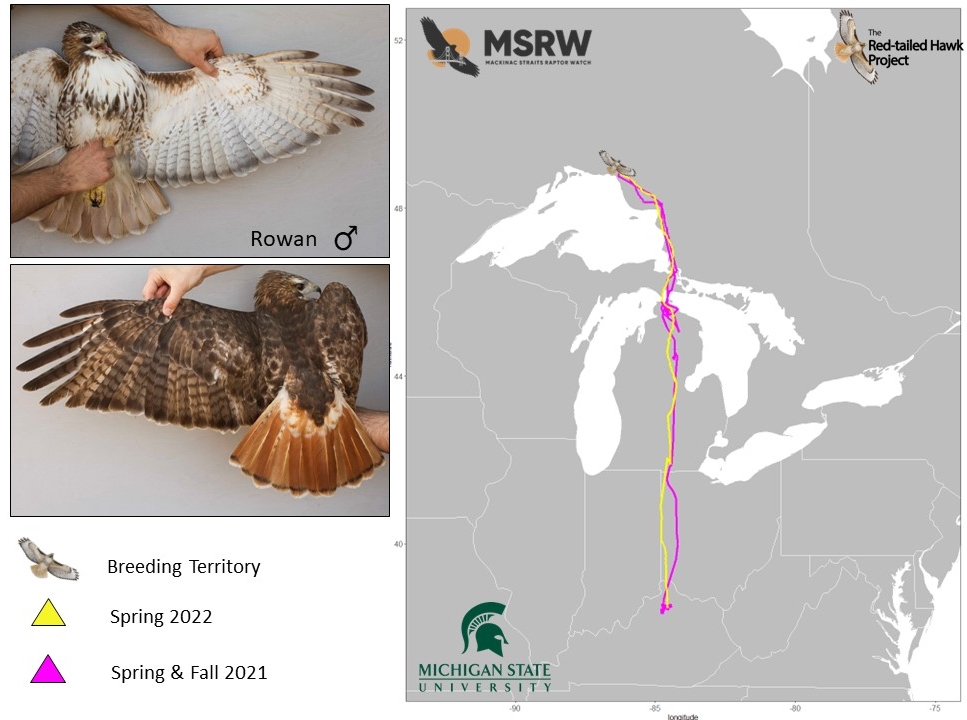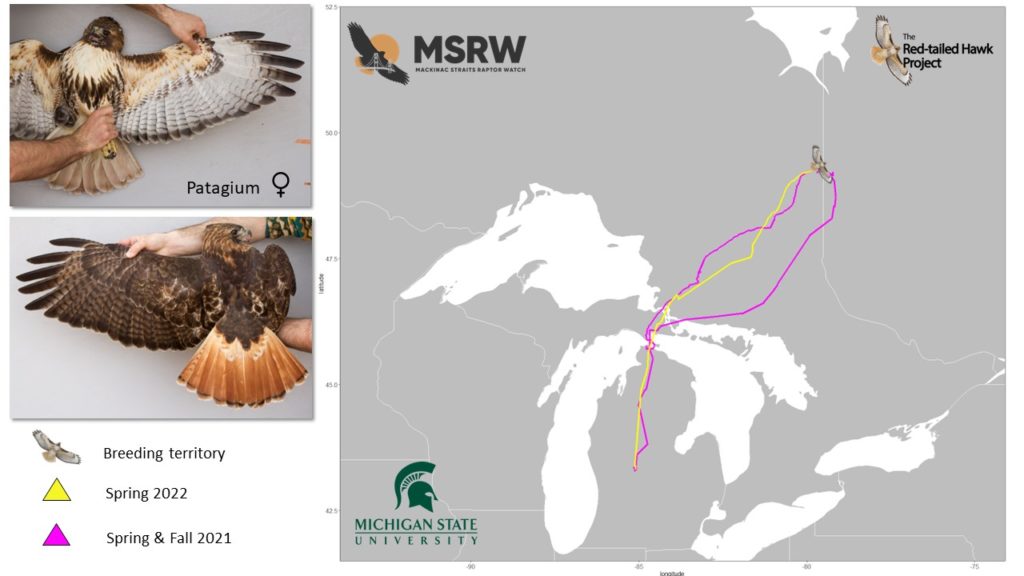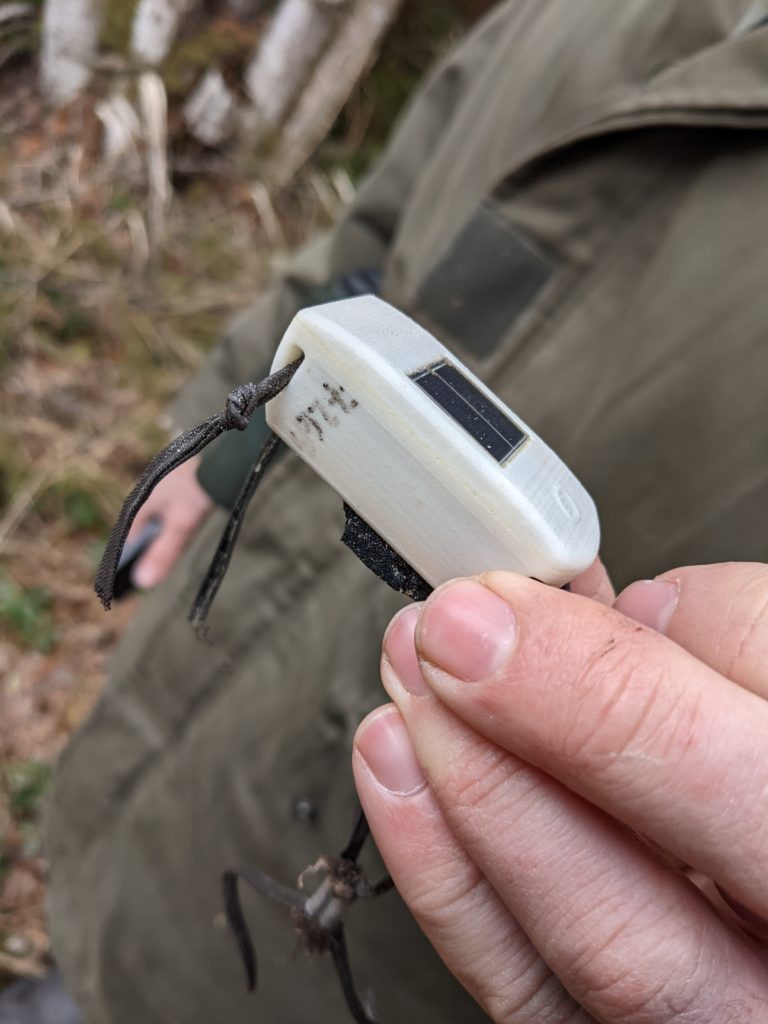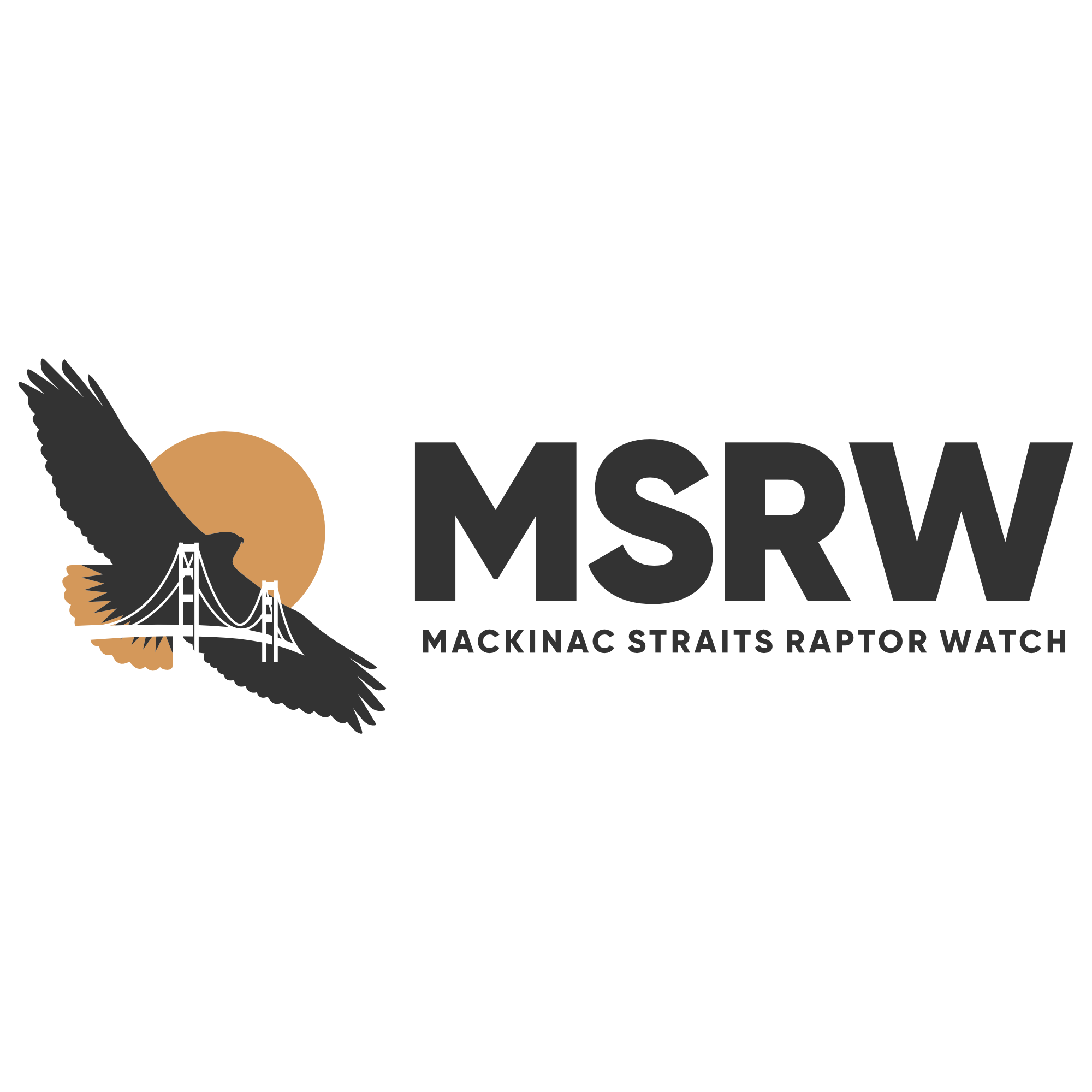Red-tailed Hawk Summer Movement Update
The spring of 2022 marked the second season studying the movement ecology of Red-tailed Hawks in the Straits region. This past field season, 7 of our birds from 2021 migrated North, once again using the Straits in the hopes of returning to the promised land i.e. (breeding grounds). In my last post, I showed how consistent the timing of the crossings events were for individuals from 2021, indicating that adult birds exhibit high route fidelity and will use similar migration paths each year. Of the 2021 birds, only two are transmitting regularly from their summer grounds and these are the same two that did so last summer, Rowan and Patagium.
Rowan is an adult male, and at the time of capture we aged him to be at least 5 years old (possibly older) and now another year has passed making him at least 6. Looking at the GPS data in Google Earth it appears that Rowan is nesting in the exact same spot and using the same territory as he did in 2021. Rowan arrived on his breeding grounds on April 26th in 2021 and on April 17th in 2022.

Patagium, an adult female has also returned to the exact same territory which lies on the border of Northern Ontario and Quebec. She too is using the same territory, but looking at her location data and where she has been incubating, her new nest site appears to be approximately 100m away from her previous nest location in 2021. Previous studies have shown that Red-tails will typically have a few nests in their territory and can cycle between them from year to year, this appears to be the case for Patagium and this is really neat to document. Patagium arrived on her breeding grounds on April 18th in 2021 and on April 20th in 2022.

The remaining birds that returned in 2021 include: Sam, Trinity, Morpheus, Rip & Herald. Hopefully, will hear from the first four when they return south this fall. Unfortunately, Herald is no longer with us as she was predated on April 24th after crossing from Mackianc island into the Upper Peninsula. Luckily, I was able to recover the transmitter and successfully deploy it on a new bird this spring.

There are also a few others that are no longer transmitting with us from 2021 and these include Traveler, Red and Kirby. Unfortunately, we do not know what happened to these birds since our units don’t send data once they are out of service and these three did not return in the fall of 2021. Our last bird of 2021 is Jack who is still transmitting back logged data, so we don’t know where he currently is or where he wintered but we know where he spends the summer which is far from cell service. Perhaps during fall migration we will get all of the remaining data and find out where he has been.
At the conclusion of the 2022 field season which ran from the beginning of April through the end of May we were able to capture 110 Red-tailed Hawks and deploy 15 more transmitters. With these new birds we are starting to get a really good idea of the breeding and wintering distribution for this population of Red-tails while showing how the Straits are an important location in their migratory cycle. My next blog will introduce all the new birds and will highlight what we have seen so far.

